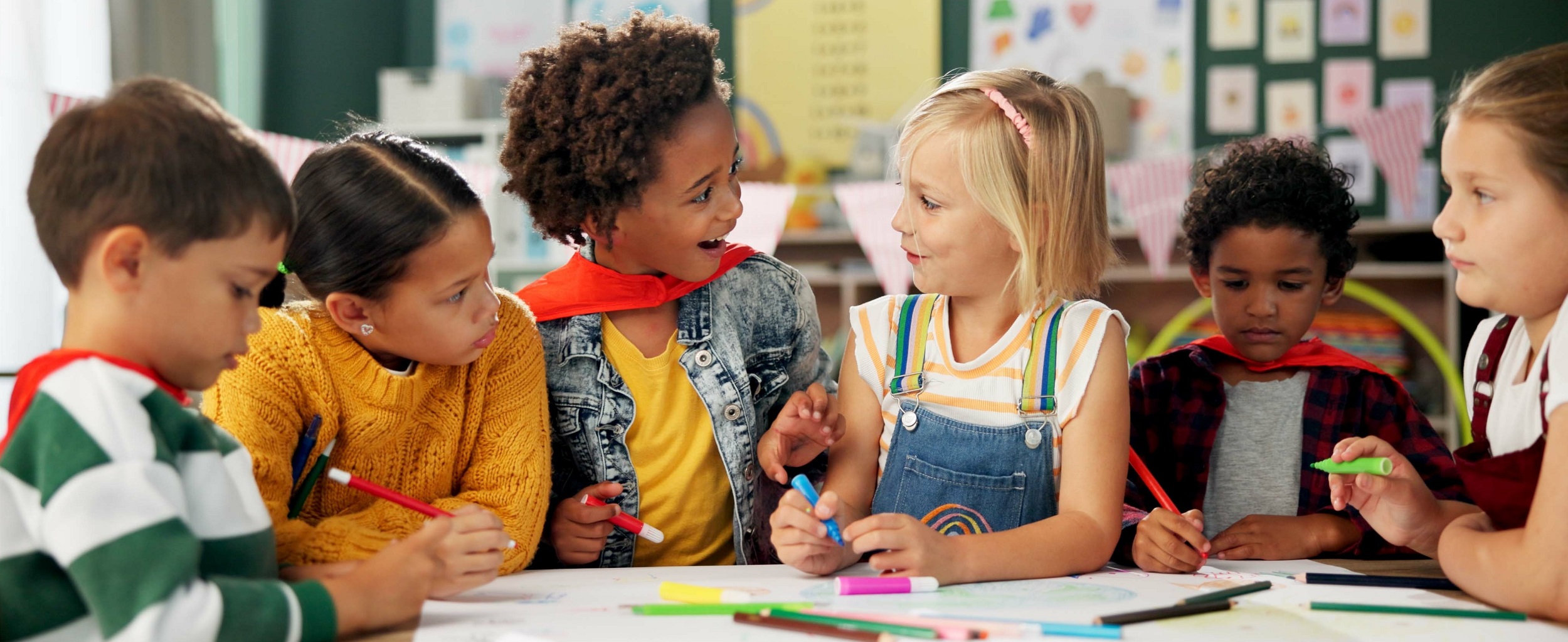The Literacy Rotation Master Plan: Building a Blueprint for Better Engagement

There is no one-size-fits-all when it comes to teaching literacy.
Think of your students — past, present, and/or future. Some love to talk (or stay quiet) while they write, and others benefit from extra support, more flexibility, or shorter tasks. Many bring a combination of these needs and strengths, which can shift depending on the time, task, or even the day. So, how do we accommodate these different needs in a primary English language classroom?
That’s where a well-crafted literacy rotation plan comes in. Think of it as a blueprint—a flexible, intentional framework that allows all students to engage meaningfully with reading and writing. The set-up is simple: a set number of activities are either placed around the room (for students to rotate through) or written on the board (for individual or group completion), which are all within clear timeframes and use transition cues.
The possibilities are endless, but preparation makes all the difference. We can design literacy stations that provide opportunities for all students to explore, reflect, and grow through direct experience and active engagement.
In this blog, I'll walk you through three important strategies to help you plan literacy rotations that support every learner in your primary English language classroom.
1. Balance Levels of Interaction
 The main goal in this strategy is to create space for students to experience learning in diverse ways. Each station within the rotation should invite younger learners to engage in literacy differently through varying the levels of interaction and engagement required for each activity. We can adjust the participatory structures for one or more rotation activities, for example:
The main goal in this strategy is to create space for students to experience learning in diverse ways. Each station within the rotation should invite younger learners to engage in literacy differently through varying the levels of interaction and engagement required for each activity. We can adjust the participatory structures for one or more rotation activities, for example:
-
- Individual activities to support focus and self-reflection (e.g., journaling, independent reading)
- Pair work to encourage conversation and shared thinking (e.g., echo reading, peer interviews)
- Group work for collaboration and problem-solving (e.g., acting in a play, word-building games)
- Teacher-led support for additional scaffolding and/or formative feedback (e.g., read aloud, comprehension interviews)
We could also vary the types of communication students use:
-
- Verbal: Storytelling, discussions, partner reading
- Written: Sentence building, personal narratives, response journals
- Nonverbal: Drawing, silent role-play, sequencing visuals
Here is an example of a literacy rotation organized where students move to different sides of the classroom, using a timer for 13-minute activities with a 2-minute transition between each (for a total of 1 hour). Instructions and materials are placed on desks:
Example Literacy Rotation
-
- Build as many sentences as possible with word tiles in the time frame (nonverbal, hands-on; individual or pair).
- Partner read a short story sentence by sentence and discuss character choices (verbal, pair).
- Write a new ending to a shared book (written, individual).
- Act out scene using emotion cards given by teacher (nonverbal, group or teacher-led).
2. Create Distinct Atmospheres
The second strategy focuses on creating an immersive experience. The way your classroom feels during rotations matters just as much as what students do. By shifting pace, volume, and tone, you can help students enter the right mindset for the task at hand.

Here are two examples of how to change the classroom atmosphere:
|
Example 1: Quiet Corners With Varying Paces Maintain a low volume throughout the rotations, but vary the pace of each activity. This creates subtle contrast and supports students who feel more chatty or energetic without disrupting the overall calm. Timing: 17-minute stations with 3-minute transitions (three rotations for 1 hour in total) Extra: Calm instrumental or nature music playing softly in the background during each activity.
Classroom set-up: Activity order written on the whiteboard for groups to follow. |
|
Example 2. Dynamic Rotations Remind students that the volume will vary at each station, so part of the challenge is learning to focus on the activity in front of them — regardless of the noise level around them. Timing: 17-minute stations with 3-minute transitions (three rotations for 1 hour in total) Extras: Lively instrumental music during transition to help reenergize and signal movement.
Classroom set-up: Front of the room is organized for the calm activity while the back of the room is set-up for the lively activity. There could also be a couple of tables left empty between the calm and lively activity like the figure shown below. |
For more ideas on adjusting the volumes of existing activities, be sure to read 2 Icebreakers for Kids — With Lively and Calm Options.
3. Alternate Resources for More Input
 The final strategy focuses on encouraging students to engage with a range of literary texts. Literacy rotations offer the perfect opportunity to introduce younger learners to different types of texts — both in print and digital formats.
The final strategy focuses on encouraging students to engage with a range of literary texts. Literacy rotations offer the perfect opportunity to introduce younger learners to different types of texts — both in print and digital formats.
Here’s a summary of text types you might include:
-
- Print materials: novels, nonfiction, newspapers, magazine articles, posters
- Digital tools: audiobooks, educational apps, videos, podcasts
- Creative materials: story die, comic strip templates, sentence tiles, slide decks
These texts can either be spotlighted — where all activities center around one or two specific types of texts — or diversified, where each station offers a different format. By rotating the tools and resources students use, you invite exploration, spark curiosity, and increase accessibility for all students’ varying learning interests and needs.
For more ideas, read Genre-Based Instruction: A Powerful Approach for Teaching Writing to MLEs. Eric Gómez Burgos shares engaging sample activities on how to use different text types to teach writing to MLEs — these could be longer rotation activities for younger students with a higher level of literacy.
At the end of the day, it is important to remember that these strategies are just a starting point or, even, a springboard for your own ideas. What you create will depend on your learners, your goals, and your classroom dynamic. Try shifting the atmosphere, swapping resources, or reworking the groups, and see what happens. Each small change is a chance to better connect with how your students learn best.
 Happy Teaching and Learning!
Happy Teaching and Learning!

